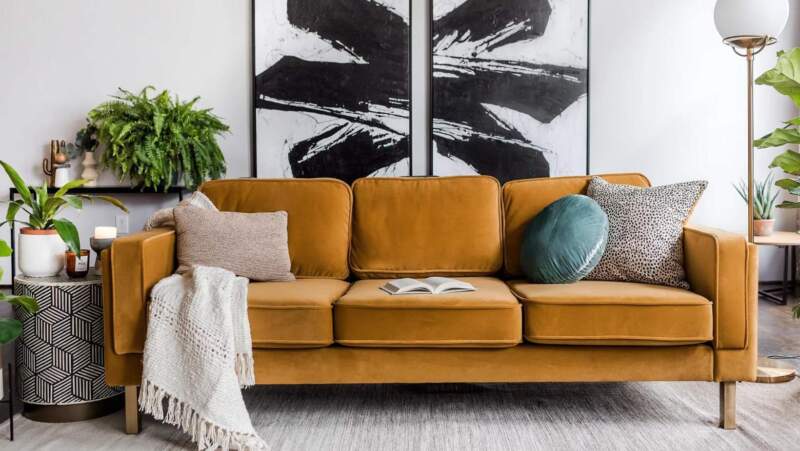Imagine that you have recently purchased a gorgeous new sofa. Perhaps it’s a smooth, modern microfiber that almost shouts durability, or maybe it’s a deep, soft velvet that whispers promises of blissful comfort. You can’t wait to get it home and give your room a whole makeover!
But wait a minute—did you really make the best decision? Velvet and microfibre each have Pros and Cons. Selecting the incorrect fabric for your way of life might result in dissatisfaction, a ruined investment, and possibly even a few headaches in the process.
Fear not—we are here to assist you! Consider this your crash course in the “must-knows” prior to deciding on your choice no worries…! In this blog, we will get to know the Pros and Cons of those critical factors that are important to know before buying furniture like expensive beds and couches.
What is microfiber?
Microfiber, a feather-light synthetic fabric woven from ultra-thin fibers, boasts impressive functionality. Renowned for its stain-resistant nature and easy cleaning, it’s a lifesaver in homes with pets or children. Additionally, its durability and affordability make it a popular choice for furniture and everyday essentials. However, its synthetic origin may translate to a slightly less luxurious feel compared to natural fabrics.
Is microfiber good on a sofa?
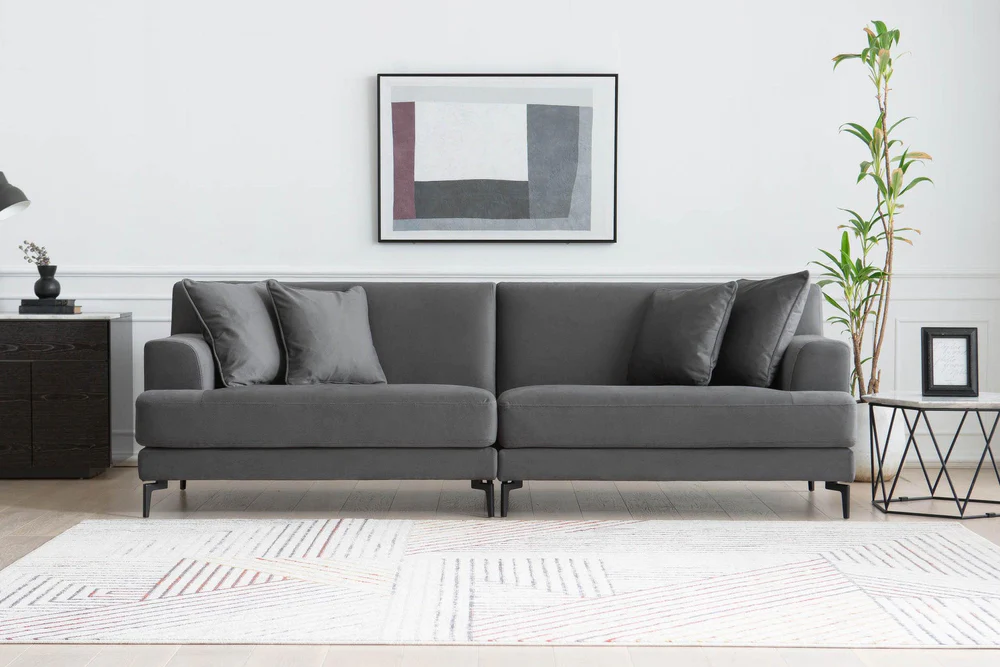
The Gentle Giant (Mostly): While microfiber prioritizes resilience, it doesn’t neglect softness completely. Its fine fibers create a pleasant, comfortable texture against your skin, perfect for those cozy movie nights on the couch or snuggling up in a plush bathrobe.
The Indestructible Champion: Picture a fabric that scoffs at deterioration. That superhero is microfiber. Its tiny, tightly woven threads provide an almost impenetrable barrier against snags, scratches, and general wear and tear. For busy spaces like living rooms full of children and dogs, or even the clumsy exploits of a home office chair, this makes it perfect.
Wrinkle-free: Ironing a chore you’d rather avoid? Microfiber is here to save the day. This fabric is naturally wrinkle-resistant, so you can enjoy a perpetually tidy look even if you don’t have time for frequent ironing.
The Environmentally Aware Leader: A few microfibers are composed of recyclable materials, did you know that? This implies that selecting microfiber may help you have a less negative environmental impact. If you value sustainability, look for microfiber products with eco-friendly certifications.
Is microfiber easy to clean?
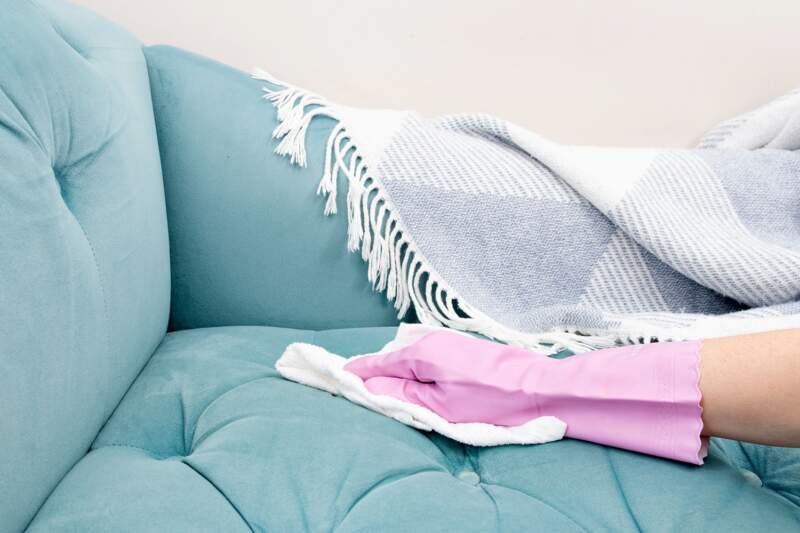
The Stain Slayer: Accidents happen, but when you use microfiber, you have less to worry about. Instead of soaking in, liquids usually bead up on the surface, giving you valuable time to get a cloth and clean up the mess before it becomes worse. Microfiber makes cleanup easy, whether it’s from juice spills on the couch or coffee spills on your desk chair.
The Cleaning Concierge: Do away with labor-intensive cleaning procedures and specific supplies. The ultimate low-maintenance champion is microfiber. The majority of cleaning tasks just call for a small amount of mild soap and water so you can quickly restore your furniture or surfaces to pristine condition.
Affordability of microfiber
Searching for luxurious furniture that won’t break the bank? Microfiber is like sparkling armour for you. This adaptable fabric is a great option for furnishing larger spaces or on a tight budget because it provides an amazing balance of cost, design, and durability.
Does microfiber fade?
Forget about your furnishings gradually becoming less colorful. Microfiber is incredibly color-fast; it does not fade in the sun or with repeated washings. This implies that the vibrant colors of your favorite couch covers or throw cushions will last longer, keeping your room feeling new and welcoming.
Are microfiber couches good for pets?

Microfiber is often a top pick for homes with pets because it’s incredibly stain-resistant, durable, and easy to clean! Its tightly woven fibers resist spills, scratches, and pilling, helping your furniture stay beautiful despite playful paws and the occasional mishap. Plus, pet hair is easily brushed or vacuumed off the smooth surface, saving you time and lint-roller frustration. While you’ll want to keep those claws trimmed to avoid snags and consider how warm your home gets (microfiber can trap a bit of heat), this fabric is a lifesaver for pet parents who want practical yet stylish furniture!
Cons of microfiber: Things to Keep in Mind
The Hard to Breathe Warrior: Although microfiber is incredibly pleasant, its breathability pales in comparison to that of materials like cotton or linen. This can be an issue with clothing because it can trap heat and be uncomfortable, particularly in hot weather.
The Pilling Paradox: Microfiber is susceptible to a condition known as “pilling.” This is the development of tiny ball-like structures on the surface that might take away from the overall look. Although pilling can be reduced with appropriate care, it’s something to consider, particularly in high-traffic areas.
The Synthetic Sidekick: Made of artificial polymers, microfiber is classified as a synthetic fabric. Some people who favor natural materials may find this troubling. However, advancements in technology have made modern microfiber incredibly soft and comfortable, often surpassing some natural fabrics in that regard.
The Factor of Flammability: It’s crucial to remember that certain microfiber textiles may be more flammable than natural fibers like cotton. Even while microfiber is usually safe for the majority of home uses, it’s important to find out the flammability rating of the particular product you’re considering, particularly if fire safety is a top priority.
Specialized Cleaning (Occasionally): Although most microfiber cleaning only needs soap and water, certain specialized products, such as microfiber mop heads or cleaning cloths, could need extra maintenance guidelines to stay effective. Make sure you are aware of the correct cleaning procedures for the particular microfiber products you own.
The Shedding Shadow: Some microfiber fabrics, particularly those with a lower thread count, might shed tiny strands, which is comparable to the pilling problem. While these are generally harmless, they can contribute to dust and microplastic pollution. They can harm someone with lung or breathing problems or those who are allergic to little particles in air. Opting for high-quality, tightly woven microfiber can help minimize shedding.
Is velvet good for couches?
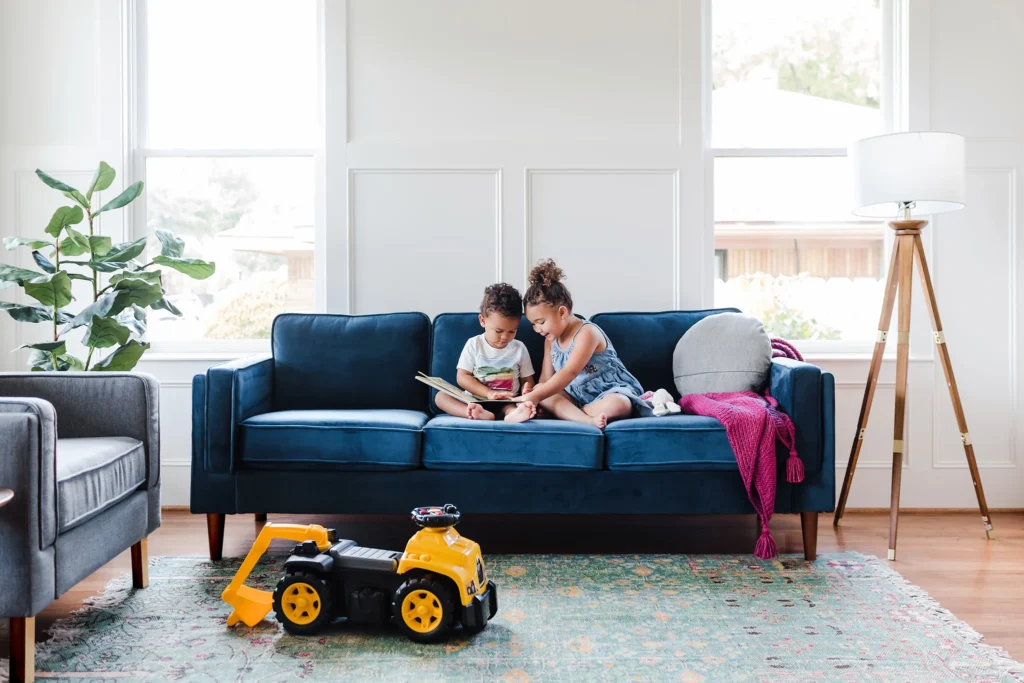
The Luxurious Touch: When it comes to pure indulgence, velvet reigns supreme. Its plush pile creates a sensation of sink-in softness that’s simply unmatched. Imagine snuggling into a velvet armchair with a book or running your fingers across a velvet throw pillow – a moment of pure bliss!
Enduring Beauty: The sumptuous textures and classic grace of velvet surpass fads in fashion. Having a piece of velvet is like possessing a bit of history. Whether you’re dressing up a velvet blazer for a special occasion or adding a velvet sofa to your living room, this opulent fabric elevates any area.
Is velvet good for pets?
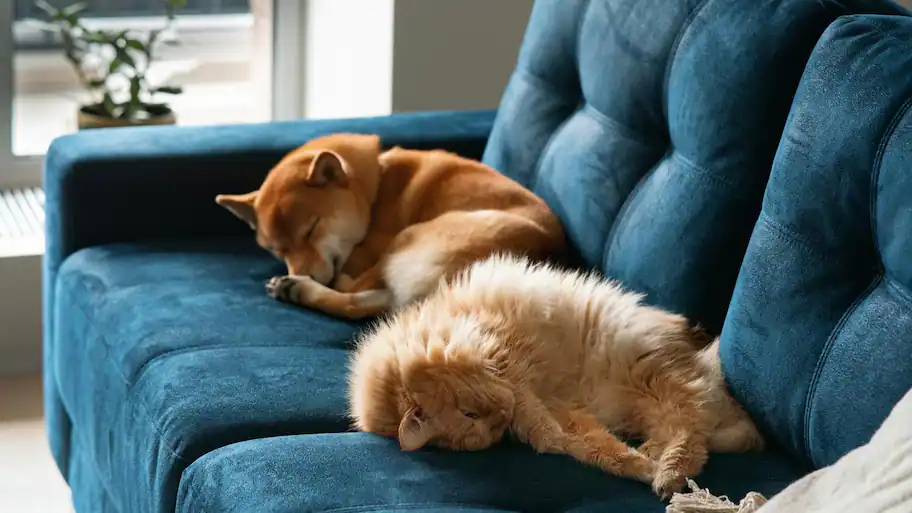
While velvet looks absolutely luxurious, it might not be the most practical choice for homes with pets. Its plush texture can act like a magnet for pet hair and might be challenging to keep clean from muddy paws or the occasional drool mishap. Velvet also requires careful maintenance, needing regular brushing to prevent matting, and may require professional cleaning for stains. If you prioritize a low-maintenance lifestyle or have particularly playful furry friends, other fabrics might be a better fit. However, if your pet is fairly laid-back and you’re willing to invest in upkeep, a velvet piece can add a touch of undeniable elegance to your home!
Is it easy to clean velvet?
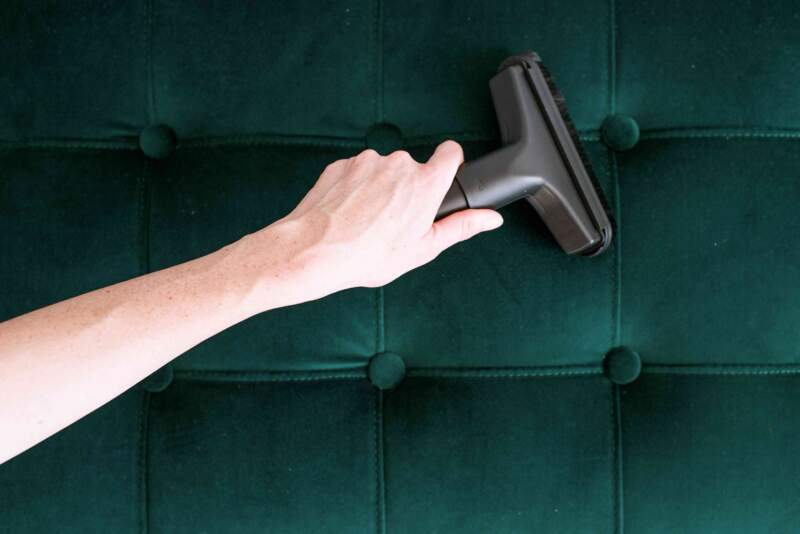
Contrary to popular belief, velvet can actually be quite resilient against light stains. Its tightly woven fibers prevent liquids from soaking in easily, allowing you time to blot them away. However, be warned that water and harsh chemicals can leave permanent marks, so vigilance is still key.
Is microfiber like velvet?
Velvet and microfiber may appear alike from a distance, but they are actually very different! Ultra-fine fibers are used to weave microfiber, a synthetic fabric renowned for its resilience and ease of maintenance. Imagine it as an ultra-strong, stain-resistant cleaning cloth that is also incredibly easy to clean. In contrast, velvet is composed of either synthetic or natural fibers, such as cotton or silk, and has a plush, soft texture that glistens in the light. Picture flowing curtains and exquisite clothes. Velvet adds a hint of refinement and drama, but microfibre is your everyday, workhorse when it comes to furniture.
Affordability of velvet
Velvet’s beauty and softness come at a cost. It’s generally more expensive than microfiber, making it less budget-friendly for larger areas or multiple purchases.
Cons of using velvet
The Delicate Darling: Velvet isn’t the easiest fabric to care for, let’s face it. To keep its opulent appearance, it needs mild maintenance. Daily spills, abrasive cleaning agents, and rough handling can damage its delicate surface. Therefore, extra care may be needed if you have a history of mishaps.
The Water Woes: Water is velvet’s worst enemy, yet it can tolerate mild stains. Spills may permanently change the texture or just leave obvious stains. This calls for increased caution, particularly in homes where messy misadventures are common.
The Cleaning Conundrum: Velvet cushion covers should not be washed in a microfiber cloth. To keep its lovely appearance, velvet frequently needs to be professionally dry-cleaned or cleaned using specific cleaning supplies.
Final Thoughts
- Choose microfiber if:
- You need a durable, easy-care fabric.
- You have a budget-conscious mindset.
- Your space is high-traffic or has pets/children.
- Choose velvet if:
- You want a luxurious and elegant look.
- You’re willing to invest in proper care and maintenance.
- The fabric will be used in a low-traffic area with gentle use.
Important considerations
- There’s no single “better” option: The best choice depends on your individual needs, preferences, and lifestyle.
- Make informed decisions: Consider all factors before purchasing to avoid making costly mistakes that don’t suit your needs.
faqs
What is better than microfiber?
Consider these substitutes for microfiber as various superhero costumes! Leather may be your savior if you’re longing for a hint of classic elegance and less disarray on your sofa. It requires some maintenance, but it’s fashionable, inherently durable, and only gets better with age. However, if your furniture is constantly battling muddy paws and spills, you might want to look into performance fabrics. These quickly clear up spills and are similar to stain-proof armor! Although they may not feel as natural as leather, their worry-free usefulness is incomparable for hectic homes.
Does microfiber last long?
Imagine microfiber like a hard-working friend – the better you treat it, the longer it sticks around! High-quality microfiber is built tough and can last for years, especially if it doesn’t face too much rough play. But like any fabric, harsh cleaning or lots of wear and tear can shorten its lifespan.
How long will microfiber couch last?
The lifespan of a microfiber couch depends on several factors, but you can expect it to last anywhere from 3 to 10 years.


